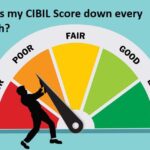Debt relief programs are structured initiatives designed to help individuals, businesses to manage, reduce, or eliminate their debt burdens. These programs can take many forms, ranging from government-sponsored initiatives to private sector solutions. They play a critical role in maintaining economic stability, offering a lifeline to those struggling with debt, and enabling economic growth. Here is an in-depth look at various types of debt relief programs and their impact.
Debt Consolidation:
Debt consolidation involves taking out a new loan to pay off multiple debts. This approach simplifies debt repayment by combining several debts into a single payment, often at a lower interest rate. It helps individuals manage their finances more effectively and can reduce the overall interest paid.
Credit Counseling:
Credit counseling agencies offer services to help individuals manage their debt and budget their finances. These agencies often work with creditors to create a debt management plan (DMP) that consolidates payments into one monthly payment and can reduce interest rates and fees.
Debt Settlement:
Debt settlement involves negotiating with creditors to pay a lump sum that is less than the full amount owed. While this can significantly reduce the debt burden, it can negatively impact credit scores and is often seen as a last resort.
Bankruptcy:
Bankruptcy is a legal process that allows individuals or businesses to eliminate or repay their debts under the protection of the bankruptcy court. There are different types of bankruptcy, such as Chapter 7, which discharges most unsecured debts, and Chapter 13, which reorganizes debts into a manageable repayment plan.
Business Debt Relief Programs
Debt Restructuring:
Debt restructuring involves altering the terms of existing debts, such as extending the repayment period, reducing interest rates, or converting debt into equity. This can help businesses avoid bankruptcy and continue operations.
Bankruptcy Protection:
Businesses facing insurmountable debt may file for bankruptcy protection under Chapter 11. This allows them to reorganize their debts and operations, providing a chance to return to profitability while staying in business.
Government Grants and Loans:
Governments often provide grants and low-interest loans to struggling businesses, especially during economic crises. These funds can help businesses stay afloat and eventually recover from financial difficulties.
Economic Stability:
Debt relief programs are crucial for maintaining economic stability. By alleviating the debt burden on individuals, businesses, and nations, these programs help prevent defaults and bankruptcies, which can have ripple effects throughout the economy.
Improved Credit Scores:
For individuals and businesses, participating in debt relief programs can lead to improved credit scores over time. This makes it easier to access credit in the future, promoting financial health and stability.
Increased Consumer Spending:
Reducing debt burdens frees up income for consumer spending, which is a key driver of economic growth. This can stimulate demand for goods and services, leading to job creation and economic expansion.
Social and Economic Equity:
Debt relief programs can also address social and economic inequities. By providing assistance to those most in need, these programs help ensure that economic opportunities are more evenly distributed.
Challenges and Criticisms:
Despite their benefits, debt relief programs can face challenges and criticisms. Some argue that they can create moral hazard, encouraging reckless borrowing and lending behavior. Additionally, the effectiveness of these programs can vary, with some individuals and businesses failing to fully recover from debt despite receiving assistance.
Conclusion:
Debt relief programs are essential tools for managing financial crises and promoting economic health. They offer practical solutions for individuals, businesses, and nations grappling with debt, providing a pathway to financial stability and growth. While these programs are not without their challenges, their benefits in terms of economic stability, improved credit scores, and increased consumer spending make them indispensable in today’s financial landscape. As economic conditions continue to evolve, so too will the strategies and effectiveness of debt relief programs, ensuring they remain a vital component of global financial management.
Also Read- https://settleloan.in/blog/debt-settlement/debt-settlement-companies/
Get in touch with us today at www.Settleloan.in and embark on your path to financial freedom



